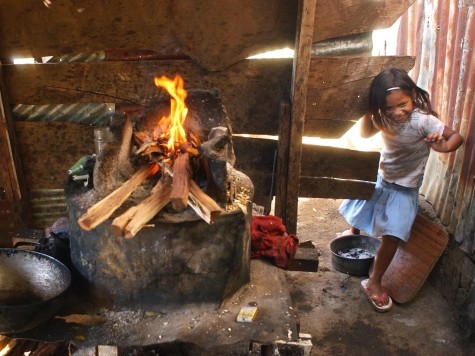The World Economic Forum (WEF) recently released its annual Global Gender Gap Report. Faculty from Harvard University and the University of California, Berkeley collaborated on the project which ranks Cuba, Nicaragua, and the Philippines ahead of the United States as “role models in dividing their resources equitably between women and men.” The forum expressed hope that this report inspires policy changes on a governmental level.
Just how did the United States fare so poorly? One must delve into the report’s quantification methods to discover why. The WEF ranked countries on the basis of the following four separate criteria: Economic Participation and Opportunity, Educational Attainment, Health and Survival, and Political Empowerment. For each of these four main criteria, subcategories are used to quantify the overall level of gender parity. A look at where the “objective” analysis placed the United States is quite alarming–until one actually takes a close look at the data.
Let’s look at Economic Participation and Opportunity first. The United States ranks 8th worldwide–behind models of productivity Mongolia and the Bahamas. How did Mongolia earn 1st place although 39% of its population lives in poverty and its GDP per capita ranks 154th? The subcategories used to determine the rank don’t favor the United States. For instance, the United States ranks 55th place in the female: male labor force participation ratio. Ghana finishes first in this category, even with its meager $3,100 per capita GDP. The United States fares even worse, 61st place, in the “wage equality” subcategory–finishing behind Zambia, Guyana, Kazakhstan, and Kenya. Keep in mind, per capita GDP in Kenya is just $1,700 a year–compared to $48,300 in the US. The report fails to mention exactly which policies of Zambia Kazakhstan, or Kenya should be adopted by the US.
Although the United States managed to tie for 1st in the Educational Attainment category, it’s no thanks to our literacy rate! A 99% literacy rate for both females and males in the United States only earned the US a ranking of 21st. Contrast this dismal performance with 2nd place Jamaica–where just 91% of females, but just 82% of males, are literate. Does something seem off here? Women attain lower literacy rates in Jamaica compared to the United States–yet rank higher on the literary subcategory? Which Jamaican educational policies should we follow here in the United States to remedy THIS situation of nearly universal literacy? Should Jamaica really rank higher on literacy even though the literacy rate in the United States is significantly greater?
According to the report, the United States also falls far short on Health and Survival. Our 33rd place rank places us behind Guatemala, Kazakhstan, and Uganda–just to name a few. Apparently, the female to male sex ration plays a large role in this dismal ranking. In this subcategory, our 41st place rank is far behind Kazakhstan once again (1st), Kenya (4th), Ethiopia (8th), and Nepal (29th). We barely managed to tie Iran and Mongolia! The United States fared even worse on life expectancy–finishing 55th. Females in the United States can expect to live 72 years here–compared to 68 for males. But this is nothing compared to the Russian Federation, which ranks 1st. Just how much better is it for females in Russia? In Russia, women have a life expectancy of 65 years compared with just 55 years for men. To reiterate- Russia earns a rank of 1st place in the “healthy life expectancy” subcategory, not because females live longer in Russia compared to the United States but because males in Russia die so much younger on average than their American counterparts on average. Does this qualify as perverse logic? Fortunately, the report provides no specifics about how the United States can alter policy to mimic the sterling Health and Survival results of Russia, Kenya, and Kazakhstan.
Lastly, the report ranks the United States 55th in Political Empowerment, behind communist Cuba, sharia law based Pakistan, and quasi-dictatorship Venezuela. Just how did WEF reach this conclusion? The subcategory of “women in parliament” is one factor. Cuba ranked 1st – compared to 32nd ranked United States. According to the WEF, apparently being a member of a puppet parliament with proportionately more females is more indicative of gender equality than being a lawfully elected member of Congress if that Congress contains proportionately fewer females. In the subcategory “years with female head of state”, the United States falls short of both Pakistan and Turkey. Which policies of Pakistan and Turkey should the United States implement? Should women across the country should be relieved at the omission?
Although the WEF report indicts the United States for its alleged lack of gender equality, a close look at the report shows a different picture of female quality of life. Literacy rates, life expectancy, and poverty rates – to name a few–all show the United States offering women more opportunity and comfort than a precursory glance at the WEF report suggests. Is Russia’s 65 year female life expectancy really indicative of better “health and survival” versus the United States so long as men fare even worse? You decide.

COMMENTS
Please let us know if you're having issues with commenting.